What happens to the millions of trees lost to the storms?
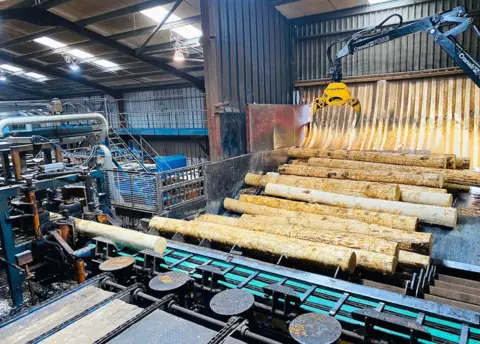 BBC
BBCMillions of trees were lost to the severe storms which battered Scotland this winter.
The forestry sector has been working hard to clear the fallen trees and minimise the loss of valuable timber.
Sawmills are currently working at near-full capacity to process the huge volume of windblown Scots pine before it degrades on the forest floor.
It is thought the recovery for the woodland impacted could take decades.
Seafield in Aberdeenshire is one of the many rural estates still reeling from Storm Arwen.
The high winds caused devastation on 26 November, impacting an estimated eight million trees across Scotland.
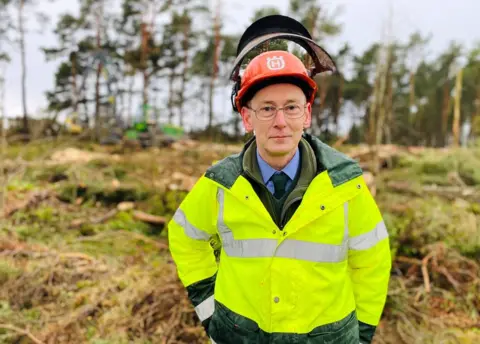
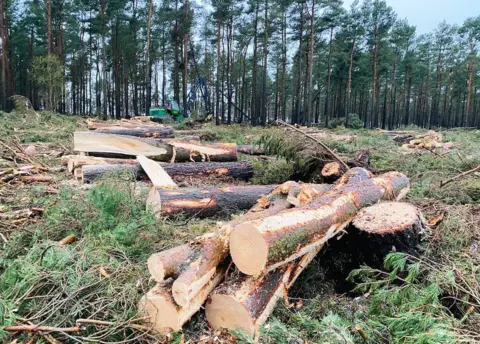
Since then, further storms have caused even more damage to weakened woodlands.
So what happens to the trees left lying on forest floors?
The first step is the clean-up.
Harvesting machines make relatively light work of the fallen trees. They are lifted, stripped and chopped in seconds.
Will Anderson is the chief executive of Seafield and Strathspey Estate.
"The impact here was quite significant, with lots of trees within this woodland being blown down," he said. "Really bad damage.
"And unfortunately we've got no option but to clear out all the damaged trees and remove them in total in this area."
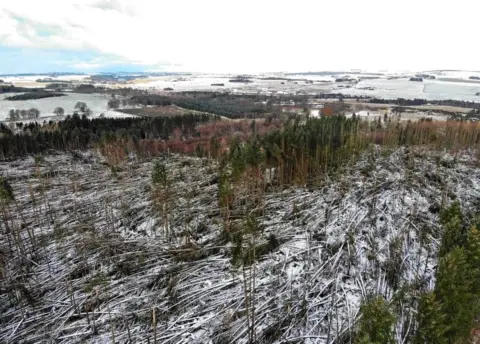 Blair Nichols / NTS
Blair Nichols / NTSThe timber from the estate is then taken to a sawmill at Mosstodloch to be processed.
This mill alone is processing about 4,000 tonnes of timber a week.
And the pressure is on to deal with the fallen Scots pine as quickly as possible.
Neil Petrie is senior site manager at James Jones and Sons sawmill at Mosstodloch.
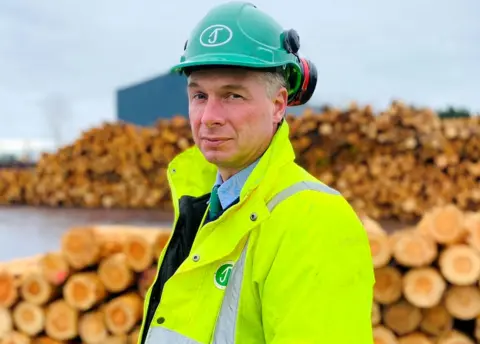
"One of the issues we've got to try and watch is blue stain," he explained.
"If pine is left out, then blue stain may start to occur in the logs. If that occurs we may have markets that won't take the blue stain pine".
With so many forests flattened, the need to rebuild and replant is a key focus.
That is where nurseries come into the equation.
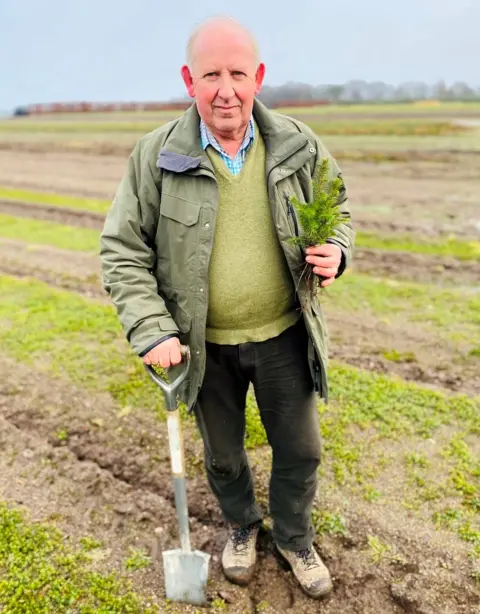

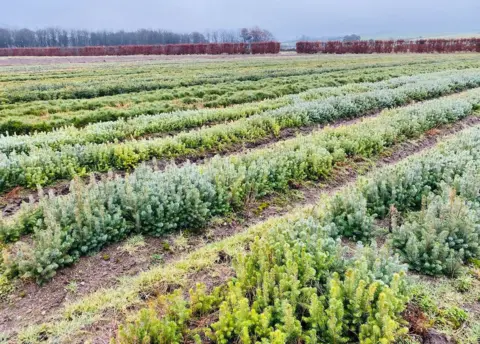
Ronald Christie is managing director of Christies of Fochabers.
Millions of saplings are currently growing.
Mr Christie described them as a "small little plant" after a year and quite delicate.
"One year later, given a good season's growth, that's the time we lift, grade, put them in the field and grow them on for another year or two years, depending on what the clients are looking for," he said.
It is a lengthy process, but in time, some of these saplings will be replanted on the Seafield Estate.
It is a vital part of the recovery, which could take generations.
